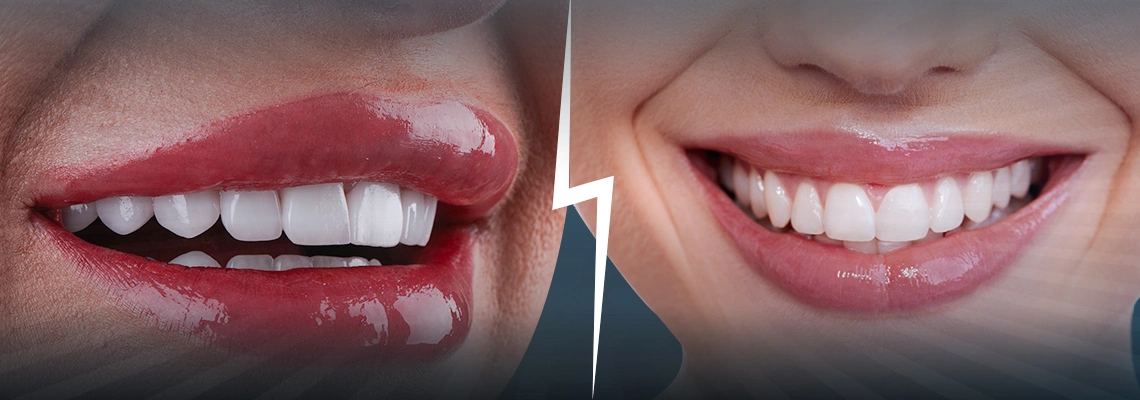ًWhat do you know about rhinoplasty risks? Rhinoplasty also known as a nose job, is a surgical procedure that changes the shape or size of the nose. It can be done for cosmetic reasons, to improve the appearance of the nose and facial harmony, or for functional reasons, to correct breathing problems or injuries.
Table of contents:
Is rhinoplasty dangerous?
Rhinoplasty is one of the most common types of plastic surgery, but it is not without risks and complications. In this article, we will discuss some of the potential dangers of rhinoplasty, the long-term side effects, and the recovery process.
Related articles:
What are rhinoplasty risks?
As with any major surgery, rhinoplasty carries some general risks, such as bleeding, infection, allergic reaction to anesthesia, or poor wound healing. However, some specific risks are related to the nose and its structure. These include:
-
Breathing difficulties. Rhinoplasty may affect the nasal passages and cause obstruction or congestion. This can impair the airflow and oxygen intake, leading to snoring, sleep apnea, or reduced sense of smell. In some cases, additional surgery may be needed to correct this problem.
-
Nosebleeds. Rhinoplasty may damage the blood vessels in the nose and cause excessive bleeding. This can happen during or after the surgery and may require packing or cauterization to stop it. Nosebleeds can be dangerous if they are severe or prolonged, as they can cause shock or infection.
-
Numbness. Rhinoplasty may affect the nerves in the nose and cause temporary or permanent numbness in and around the nose. This can affect the sensation and function of the nose, as well as the facial expression and appearance.
-
Asymmetry. Rhinoplasty may result in an uneven-looking nose due to swelling, scar tissue, infection, or poor surgical technique. The nose may appear crooked, twisted, or lopsided. This can affect the aesthetic outcome and the patient’s satisfaction.
-
Scarring. Rhinoplasty may leave visible scars on the nose, especially if an open technique is used. The scars may be red, raised, or thickened, and may take a long time to fade.
-
Septal perforation. Rhinoplasty may cause a hole in the wall between the nostrils (the septum). This is a rare but serious complication that can lead to chronic nosebleeds, crusting, infection, whistling sound when breathing, or collapse of the nasal bridge.

Rhinoplasty side effects long-term
Rhinoplasty may have some long-term side effects that can affect the health and quality of life of the patient. These include:
-
Change in sense of smell. Rhinoplasty may alter the olfactory function and reduce or distort the sense of smell. This can affect the taste and enjoyment of food, as well as the detection of odors and hazards.
-
Change in voice. Rhinoplasty may change the resonance and pitch of the voice by altering the nasal cavity and airflow. This can affect the communication and expression of the patient.
-
Psychological impact. Rhinoplasty may have a positive or negative impact on the patient’s self-esteem and body image. Some patients may feel more confident and satisfied with their appearance after rhinoplasty, while others may feel disappointed or regretful if their expectations are not met or if they experience complications.
Rhinoplasty recovery
Rhinoplasty is a complex and delicate surgery that requires careful preparation and recovery. The patient should follow the instructions and advice of their surgeon before and after the procedure to ensure optimal results and minimize risks.
Instructions before rhinoplasty:
-
Have a comprehensive consultation with your surgeon to discuss your goals, expectations, medical history, medications, allergies, and possible outcomes.
-
Stop smoking at least two weeks before surgery to improve healing and reduce complications.
-
Avoid taking aspirin, ibuprofen, herbal supplements, or any other blood-thinning agents that can increase bleeding risk.
-
Arrange for someone to drive you home after surgery and stay with them for at least 24 hours.
Instructions after rhinoplasty:
-
Keep your head elevated and apply cold compresses to reduce swelling and bruising.
-
Avoid blowing their nose or sneezing forcefully for at least two weeks to prevent bleeding or infection.
-
Avoid strenuous activities, sports, or contact with their nose for at least six weeks to prevent injury or displacement.
-
Avoid sun exposure or extreme temperatures for at least three months to prevent skin damage or discoloration.
-
Follow up with their surgeon regularly to monitor their healing progress and address any concerns.
The final results of rhinoplasty may take up to a year to appear as the swelling subsides and the nose settles into its new shape.
Very minor changes in the shape of the nose that may not exceed a few millimeters can make a big difference to the appearance of your nose, and of course an experienced surgeon can achieve both satisfactory results for you and him. With proper care and expectations, rhinoplasty can be a rewarding and beneficial procedure that can enhance the appearance and function of the nose.

Sources:
- Rhinoplasty
- https://www.mayoclinic.org/tests-procedures/rhinoplasty/about/pac-20384532
- Rhinoplasty
- https://www.plasticsurgery.org/cosmetic-procedures/rhinoplasty
- nose reshaping (rhinoplasty)
- https://www.nhs.uk/conditions/cosmetic-procedures/cosmetic-surgery/nose-reshaping-rhinoplasty
- rhinoplasty surgery (nose job)
- https://www.webmd.com/beauty/cosmetic-procedures-nose-job-rhinoplasty
- rhinoplasty: reasons, procedure and recovery
- https://www.healthline.com/health/rhinoplasty















